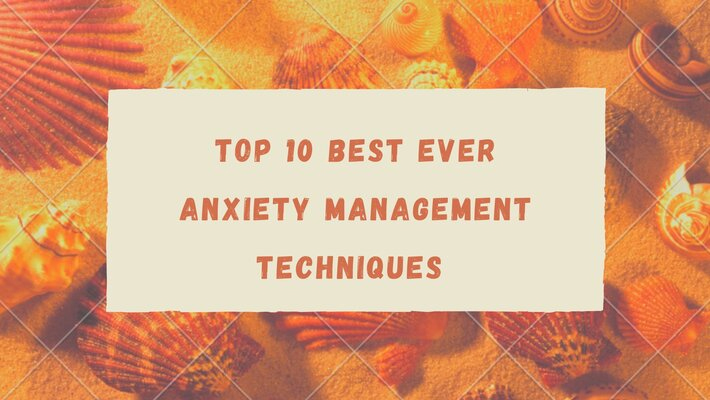
Are anxiety and stress standing in the way of your happiness? Or have you been thinking of consulting a therapist but not sure where to start? Feeling sad from time to time is a normal part of life, here in this blog we will discuss anxiety management and its symptoms.
Before going straight to the point we need to understand the definition of “anxiety”.
What Is Anxiety?
It is the feeling of fear or nervousness. Most people feel anxious, panic, or fearful about situations in life, such as money problems or exams but often once the difficult situation is over, you feel better and calmer. Sometimes the feelings of fear or anxiety continue after the difficult situation or sometimes you may feel a stronger sense of fear than other people and this is when anxiety becomes a problem and can affect you doing everyday things.
According to the Anxiety and Depression Association of America (ADAA), the most common signs and symptoms of anxiety are different in men and women for instance women will feel dizziness while on the contrary men are tend to get sweat, women will have uncomfortable pain between the shoulder blade and men will have pain in the chest, arm, and jaw. Common symptoms include insomnia, panic attacks, shortness of breath, or choking sensations.
Here are the 10 anxiety management techniques that you can follow on a daily basis:
Reduce Caffeine
Adrenaline is a hormone involved in the body’s fight-or-flight fear response.
Caffeine causes a spike in adrenaline levels, and this can make some people feel anxious or on edge.
Coffee is one of the most popular sources of caffeine. Even decaffeinated coffee contains around 2 to 12 milligrams of caffeine.
Other popular sources of caffeine include:
- Chocolate, Especially Dark Chocolate
- Chocolate Flavoured Desserts And Breakfast Cereal
People who notice a connection between their caffeine intake and anxiety should try cutting caffeine out of their diet.
Exercise
Exercise may calm anxiety in two ways. Firstly, it decreases levels of stress hormones within the body. Secondly, it makes people focus on the task of exercising, and this can distract them from involving deep thoughts.
Yoga also leads to a decrease in symptoms of depression and anxiety. It also reduces levels of molecules called cytokines in the blood. The immune system releases cytokines in response to stress.
Listen Music
Music may activate reward systems in the brain that increase feelings of pleasure and alleviate stress and anxiety.
A later study found that music preference was the most important factor in reducing stress levels. This suggests that listening to a favorite song or music genre may be an effective short-term remedy for stress.
Practice Mindfulness Meditation
Mindfulness is a popular form of meditation.
Mindfulness encourages a person to focus on feelings, thoughts, or bodily sensations that are happening in the present moment. This can help distract people from involving deep thoughts and other negative thought patterns.
Use Visualization Techniques
Guided imagery (GI) is another type of meditation. GI involves mentally visualizing peaceful scenes to promote a state of relaxation.
In comparison with the no-treatment group, the GIM group showed significant improvements in stress management and well-being. The results also showed a greater reduction in blood cortisol levels for the GIM group.
Practice Diaphragmatic Breathing
Diaphragmatic Breathing (DB) is a type of deep breathing technique. To help relieve anxiety, people can practice the following DB technique for 10 minutes several times per day:
- Lie flat on the back with the knees bent and the soles of the feet on the floor.
- Place one hand on the upper chest and the other on the stomach, below the ribcage.
- Breathe slowly and deeply in through the nose. Draw the breath down toward the stomach so that the hand on the stomach rises upward. Make sure that the hand on the chest stays still.
- Exhale slowly through pursed lips, drawing the belly button down toward the floor. The hand on the stomach should return to its original position. The hand on the chest should remain still.
Avoid Procrastination
People with anxiety may be prone to putting off important tasks or projects to temporarily avoid stress. However, procrastination often results in a last-minute rush to complete tasks before a deadline. This causes even greater stress and anxiety.
People prone to procrastination may benefit from talking therapies that focus on stress management and emotional regulation.
Go For A Walk
Going for a walk creates a diversion from your worries and releases muscle tension. Grab your headphones or ear-buds on your way out.
Distract Yourself
If you are feeling anxious, try a distraction technique, anything that redirects your attention away from distressing thoughts or emotions. Run your fingers around the edge of your phone, put your hands under running cold water, paint, or draw on a piece of paper. Distractions work because your brain can’t be in two places at once and shifting your attention to any activity will interrupt a string of racing thoughts.
Fill Your Plate With Anti Anxiety Foods
Feel good with good food. Fill your plate with magnesium, B vitamins, Antioxidant-rich foods, Omega-3 Fatty acids, Zinc, probiotics.
For example:
- Banana reduces quick anxiety
- Fermented food help with anxiety
- Enjoy a square of dark chocolate for peace of mind
- Sprinkle some turmeric to help with your nerves
- Grab a handful of blueberries (blue food for anxiety)







